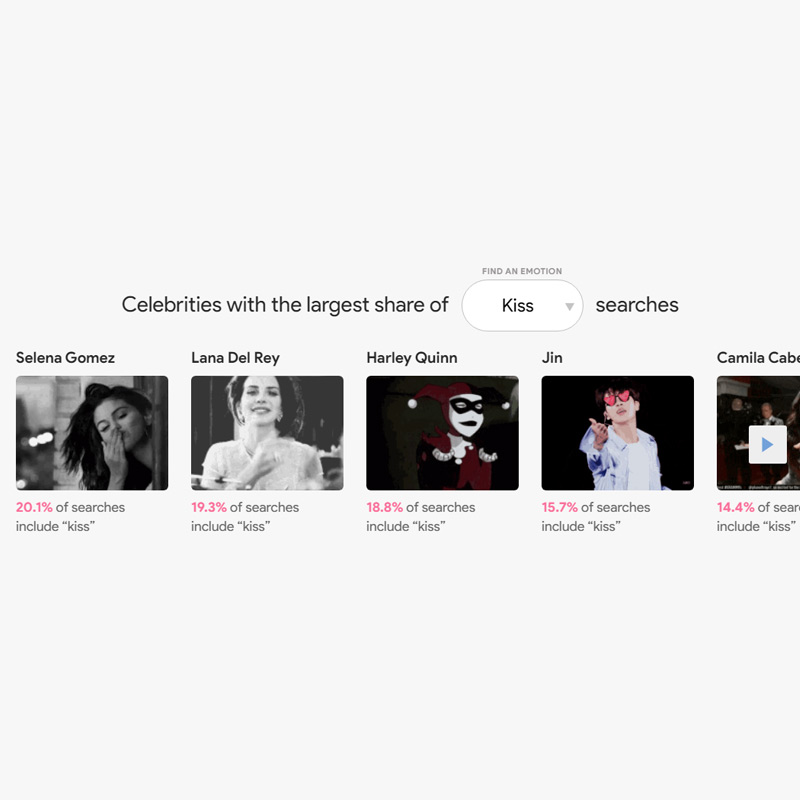
To emoticons, emojis and stickers. They can all say things beyond words. GIF too, as they are often funny and entertaining.
This is why Tenor the online GIF search engine and database, has teamed up with Google Trends to use its search search insights, to create a tool that is capable of highlighting GIF trends by celebrity, action, emotion conveyed and more.
For instance, users can use it to select any celebrity/identity and the tool will show them what the most popular GIFs for that person/character are. Users can also see the top-ranked GIFs in a listing for a particular person/character.
According to Simon Rogers, a data journalist and a Data Editor at Google on a Medium blog post:
"Using search insights from Google’s visual expression search engine, Tenor, we broke down how celebrities are used to convey emotions, feelings, and actions."
In the above example, the tool is used to search for "Drake" to understand how people emote with his GIFs.
This visualization breaks down how various emotions and actions appear in Drake searches, organized by popularity. Here, it is shown that Drake is a personality often in GIFs to portray clapping. In fact, a third of all popular GIFs of Drake are showing Drake clapping.
In this case, users can see that people of the web often communicate their enthusiasm or support using Drake GIFs.
While "clapping" is unique to Drake; other celebrities are popular to convey different feelings.
Also with the tool, users can also search for certain person/character, and see what they excel in GIF searches, as shown below:
What's more, users can also see a person/character's search data as an emotional spectrum.
With the “fingerprint” tool, users are allowed to search through a spectrum of contrasting emotions, to see several dots scattered throughout that show which celebrities or fictional characters best display the type of emotion they are trying to convey.
In an example below, shows the result of the ratio of "happy" and "sad" GIF searches for over 100 celebrities.
In this case, people more often use footballer Lionel Messi in his sad GIFs, whereas 'blonde bombshell' Marilyn Monroe at her happy face. Squidward from SpongeBob SquarePants on the other hand, is right in the middle, with people using the character to express 50% happy and 50% sad.
These interactive tools are based on data gathered by Google’s GIF and stickers search engine Tenor, which the company acquired in 2018.
The team at Google Trends create the tools by gathering the massive amount of information people have shared on the internet to express emotion, feelings and reactions, while using Tenor. The company then examined which pop culture icons were frequently selected to represent which.
In an age where communication is primarily done either through text communication, it can be difficult for someone to express their emotions using only a few words. This is why emoticons, emojis and even stickers are popular. The same goes to GIFs.
These imagery can add the additional context that’s needed to ensure people are conveying the most accurate representation of their emotions.
And Google - Tenor partnership here is simply filling the gap.
With the tool, people can get the information to know how their favorite character/person convey feelings to represent theirs, and then use the GIFs in chat messaging, social media or even memes.